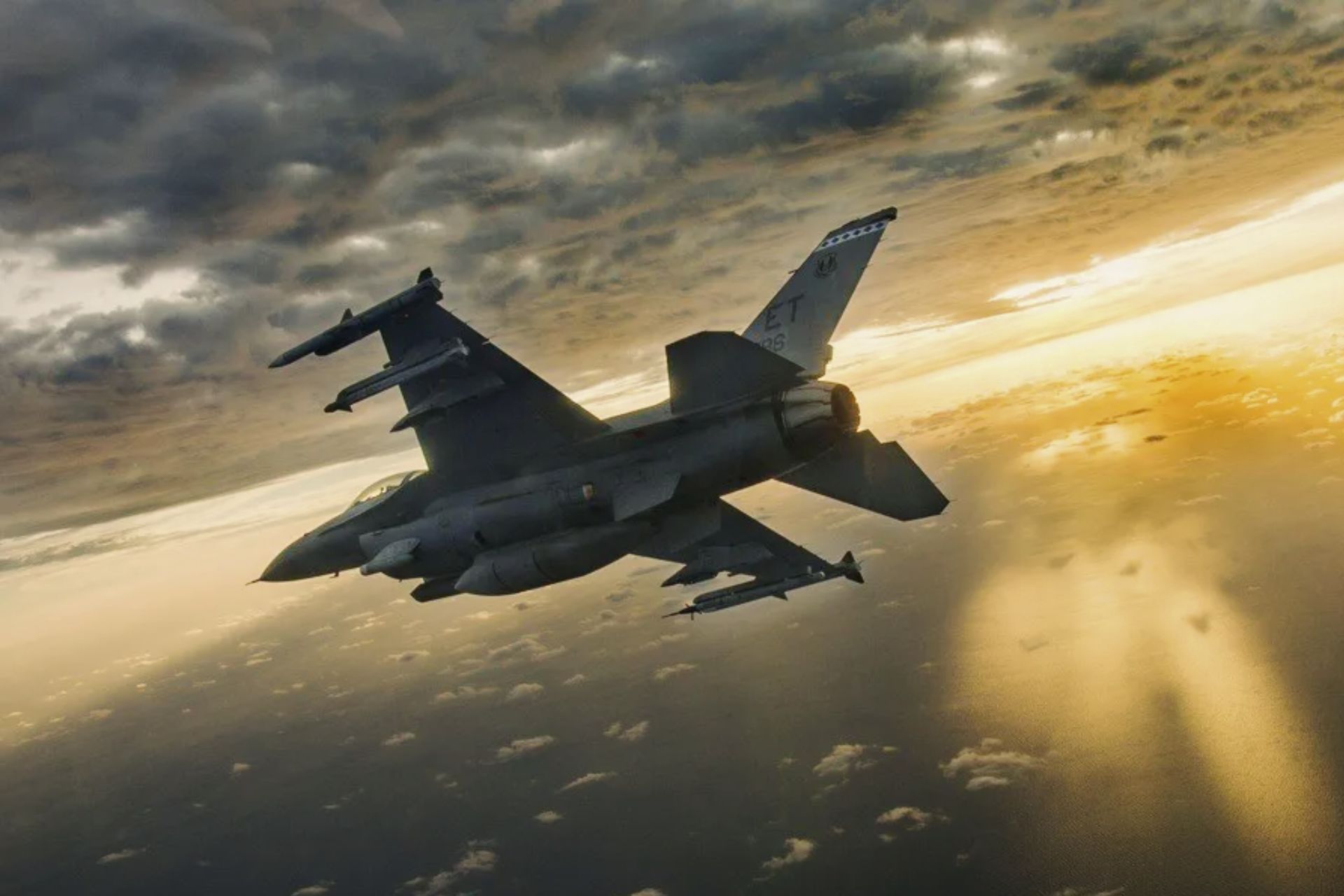Breaking News
Blinken: F-16 Fighter Jets on Their Way to Ukraine.
As the 75th NATO summit continues, strategic military support for Ukraine progresses with several countries announcing new aid packages. U.S. Secretary of State Antony Blinken confirmed on Wednesday that the Netherlands and Denmark would be providing F-16 fighter jets to Ukraine this summer. Although not specifically designed for Ukraine's war against Russia, the anticipation for F-16s has been high, with previous false rumors about their arrival.
Follow Army Recognition on Google News at this link

A F-16 is flow by Alec "Bulldog" Spencer during a mission at Eglin Air Force Base, Florida, Feb. 14, 2019 (Picture source: US Dod)
In his speech at the NATO Public Forum, Blinken highlighted the multinational effort to strengthen Ukraine's air defenses. The U.S., Germany, Romania, the Netherlands, and Italy are among the nations contributing to this initiative, with Italy donating a SAMP-T system. This announcement is accompanied by the deployment of new Patriot air defense systems and tactical defenses to protect Ukrainian cities and infrastructure, stressed by Blinken due to the increase in missile and drone attacks by Russia, including a recent tragic attack on a children's hospital in Kyiv.
The transfer includes about 85 F-16 jets, part of a "substantial support package" described by NATO Secretary General Jens Stoltenberg. This package not only includes the jets but also four Patriot air defense systems and extensive NATO-led training for Ukrainian troops. Stoltenberg emphasized that Ukraine's path to NATO membership is now considered "irreversible," signaling a deep commitment to Ukraine's defense and sovereignty.
The F-16 Fighting Falcon is a multirole fighter aircraft initially developed by General Dynamics for the U.S. Air Force. Designed as an air superiority day fighter, it has evolved into a successful all-weather multirole aircraft. More than 4,600 units have been produced since production was approved in 1976, and they entered service in 1978. The F-16 is highly maneuverable and has proven itself in air-to-air combat and air-to-ground attacks. It can withstand higher g-forces than its predecessors and can deploy a variety of weapons, including air-to-air missiles, air-to-ground missiles, and various types of bombs.
The F-16 features an internal M61 Vulcan cannon and 11 locations for mounting weapons and other mission equipment. The aircraft's notable versatility is supported by advanced radar and avionics systems that enable precision targeting. Its design includes a bubble canopy for better visibility and an ejection seat inclined at 30 degrees to reduce g-force effects on the pilot. The F-16 has been adopted by 25 nations worldwide, making it one of the most widely used fighter aircraft globally due to its proven capabilities and reliability in numerous military conflicts.
The arrival of the F-16s will not be a game-changer for Ukraine, and it remains to be seen how Ukraine will deploy these jets, particularly concerning potential operations over Russian territory or airspace, which has been a point of contention and caution due to fears of escalating the conflict.
The arrival of the F-16s marks the end of a lengthy wait for Ukrainian President Volodymyr Zelenskiy, who has lobbied for at least 18 months for Western jets to strengthen his outdated Soviet-standard air force, no match for Russia’s. Zelenskiy expressed his gratitude towards Denmark, the Netherlands, and the U.S. for practical steps of assistance – and indicated he hopes for more contributions to reach a target fleet of 130 jets to robustly defend against Russian aggression.
Furthermore, Norway and Belgium have also committed to supplying F-16s in the future, enhancing what Zelenskiy anticipates as a growing air force capability coalition. This collective effort underscores NATO's strategic approach to not only bolster Ukraine's immediate defense capabilities but also to prepare it for long-term security challenges.
Secretary of State Antony Blinken reinforced ongoing support, stating that the delivery of F-16 jets should refocus Russian President Vladimir Putin's strategies, highlighting the sustained resilience and support Ukraine will receive from its allies.
While immediate NATO membership for Ukraine is not anticipated until the conclusion of its conflict with Russia, the alliance's support remains unwavering. The strategic military enhancements, including the F-16s, are part of a historically significant aid package that aims to prepare Ukraine for a future where it stands robustly on its own in the European security landscape.


























